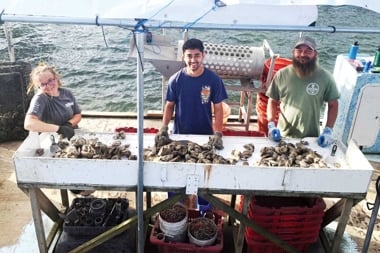
Love it or not, the humble, stinky garlic bulb has been with us for about 5,000 years. It’s been revered for both its culinary credentials and its health-giving nutrients. Check out these glorious garlic-loving recipes.
The modest garlic clove is revered for both its culinary credentials and its health-giving nutrients. For centuries, garlic has been used as powerful, pungent medicine, as well as a zesty flavour enhancer in many culinary traditions.
Today, as you peruse the produce aisles of your local grocery store or visit your local farmers’ market, you’ll see plenty of fresh garlic in two basic forms:
- hardneck—a chunky bulb with a thick centre stalk and a few fat cloves
- softneck—a bulb with many plump cloves all enveloped in papery skins resembling an artichoke
Hardneck garlic is a hale and hearty bulb with four or more big cloves containing plenty of big flavour and oodles of heady spice. When exceptionally fresh, it has a sharp bite that leaves a lingering heat on the palate.
Softneck garlic is the most common bulb in grocery stores. These varieties tend to be milder and mellower than the hardneck varieties and have a longer shelf life, perfect for commercial retailers. One potential downside: peeling them can be a bit pesky when the bulbs are exceptionally fresh.
Love it or not, the humble, stinky garlic bulb has been with us for about 5,000 years. It’s a staple ingredient in culinary traditions around the world and boasts a pedigree with hundreds of varieties—each locale producing garlic that grows well in their own region.
Garlic is touted to be a miracle healer on many levels, with plenty of evidence-based research. Regardless of how it can improve your health, garlic quite simply adds punch and depth to almost any dish. It’s even known to enhance chocolate! Dig in and fall in love with our collection of lip-smacking garlic-lovers’ dishes!
Recipes
Aromatic Garlic Scape Vinegar

Vegetarian Moussaka

Roasted Garlic Vegetables with Citrus Tahini Dressing

Garlic Braised Tomato Salad with Crusted Chicken Scaloppini and Fried Capers

Creamy Asparagus Pea Soup

Puy Lentils with Sweet Black Garlic and Curried Fish

Celebrating garlic
From coast to coast, the beloved clove has grown its way into communities where it’s celebrated with well-flavoured annual celebrations. From July to September, garlic festivals can be sniffed out in various locales. Actual dates vary from year to year, but here are a few garlic events worth following.
| Festival | Location | More information |
| South Cariboo Garlic Festival | Lac La Hache, BC | garlicfestival.ca |
| Hills Garlic Festival | New Denver, BC | hillsgarlicfest.ca |
| Andrew Garlic Festival | Andrew, Alberta | andrewagsociety.com |
| Honey, Garlic & Maple Syrup Festival | Pembina, Manitoba | pembina.ca |
| Perth Garlic Festival | Perth, Ontario | perthgarlicfestival.com |
| Haliburton County Garlic Festival | Haliburton Highlands, Ontario | haliburtongarlic.ca/garlicevents |
| Verona Lions Garlic Festival | Verona, Ontario | veronalions.ca |
| Stratford Kiwanis Garlic Festival | Stratford, Ontario | stratfordgarlicfestival.com |
| Toronto Garlic Festival | Toronto, Ontario | torontogarlicfestival.ca |
| Avondale Garlic Fest | Avondale, Nova Scotia | avondalegarlicfest.com |
The many faces of garlic
There are literally hundreds of different garlic bulbs. They stem from two main cultivars: hardneck and softneck. And among these are countless varieties specific to each region and part of the globe.
Hardneck garlic
Hardneck varieties have a woody neck in the centre that shoots out a curly scape as they ripen. The hardneck comes with bigger cloves and bigger flavour—spicier and very garlicky. Numerous subtypes include
- Chesnok Red
- German White
- Polish Hardneck
- Persian Star
- Purple Striped
- Porcelain
- Red Russian (not to be confused with Russian or elephant garlic, which is actually from the leek family and isn’t a garlic plant)
Softneck garlic
There are two common subtypes of softnecks— artichoke garlic and silverskin garlic—with a large list of further subtypes.
Artichoke hints at this variety’s similarity to the artichoke vegetable: it’s a garlic bulb with oodles of overlapping small cloves encased in very thick but papery vellum, providing it with a longer shelf life.
- Bossart
- Inchelium Red
- Island Star
- Sicilian Gold
Silverskin subtypes tend to be smoother and milder in flavour and often a little more challenging to peel, given their smaller cloves and irregular shapes.
- Western Rose
- Nootka Rose
- Silver Rose
- Silverwhite
Let’s get growing
Talk to local growers at your farmers’ market to find out what kind of garlic they are offering and ask for some growing tips. Then buy a few extra heads and get ready for planting in early October, before the first hard frost hits. Garlic likes a reasonably fertile, well-drained soil, and you don’t need a huge space to start growing your own. It can be grown successfully in two- to three-gallon-sized pots.
How to plant
When ready to plant, carefully break apart the bulb into separate cloves. Make sure the papery skins stay intact, as these protect the clove from rot.
Plant each clove root-side down (pointy side up), about 2 in (5 cm) deep and about 6 in (15 cm) apart. Plant rows about 10 to 12 in (25 to 30 cm) apart. If your winters are severe, mulch with straw or leaves to a depth of about 4 in (10 cm).
In spring, remove the leaves so the shoots can come up freely. Weed regularly as the stalks grow. Garlic has very few pests. The worst are fungal and can be avoided by rotating your planting site every few years.
When to water
On the West Coast, there’s usually enough rain in the spring and early summer to encourage good garlic growth. But if you’re in an area where there’s little or no rain, you’ll need to water regularly, from 1 to 2 1/2 in (2.5 to 6 cm) per week, depending on soil type. If your soil is coarse, shallow, or sandy, you’ll need to water more often, whereas clay soil may not need as much.
Stop watering about three weeks before harvest. Garlic is usually ready to harvest by mid-July, when about half the plants have started yellowing. You’ll want to start using your crop right away, and that’s possible, of course. But if you’re patient enough to wait until they’re fully cured, you’ll be rewarded with exquisite flavour. So good, in fact, that you’ll have to remind yourself to put aside a few bulbs for next year’s crop.





